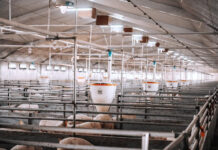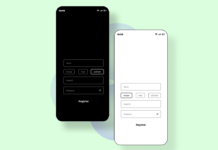Today Internet of things is being applied to a vast array of applications. From automatically keeping cars at safe distances from each other, to managing cargo temperatures, to sensors that display how healthy you are IoT has come a long way.
The buzz behind it is real.
The wide range of applications range from enterprise level use cases to consumer level, each one even more amazing than the other.
Read on to find out the benefits and the challenges that the technology presents us with.
The benefits:
1. Gathering rich data
IoT gives you the ability to gather deep and rich data about your customers and the way they’re engaging with your product. For example, let’s consider Amazon Echo. It isn’t just a beautiful bluetooth speaker. It’s a device that’s constantly learning from you. If you ask Amazon Echo, “Will I need an umbrella today?”, it will connect with Alexa database to look for weather conditions and tell you if it’s going to rain or not.
Later on, Amazon Echo would automatically connect with weather services, anticipate the probability of you going out and offer suggestions on auto-pilot.
In much a similar vein, sensors used with any number of devices or objects can yield better data that can enhance their performance. An IoT enabled car tyre can monitor tyre usage, match it up with performance data and alert you before it goes bust. Ultimately this will lead to better user experience that customers love.
Again, when IoT enabled, the data gleaned from tyre usage pattern can help create automatic alerts and performance reports and even generate suggestions for tyres that are better suited for the climate and soil conditions at a place. This could save the customer money and give better opportunities for eCommerce marketers to suggest products.
2. Better alerts
With the huge amount of data-gathering that’s going on, made in possible in part due to each device being connected to another over the same network, you can send the customer useful notifications on usage. If milk runs out you can send a SMS notification that informs the customer about it. If the customer’s car is low on fuel, send them an automated alert even before they sit inside the car. Customer service is evolving from a point where you provide what customers ask for to where you anticipate needs and fulfill those needs even before they know they want it. This breeds loyalty.
Smart meters that check on unnecessary resource usage can help save bills. For example, how about lights that tell you to turn them off when not in use. You’d never have to deal with food going bad or medicines expiring since you will receive alerts beforehand on all consumables.
3. Better stocking
In business IoT devices will measure and update inventory in real-time by keeping track of each item in the inventory. As soon as items are running low, the system will create alerts. Knowing exact details about where your item is being shipped to, where it is at the moment and if it’s damaged helps exert a novel level of control helping move things efficiently, save money and increase revenues.
Now let’s go over the challenges.
Here are the challenges:
1. Training your staff
It’s a new technology that would mean that you’ll need to train your staff appropriately. The staff members who’re going to use it need to spend a lot of time familiarizing themselves with the technology.
The amount of training will be directly proportional to the number of staff you have. Depending on the complexity and extant skill levels this can range from easy to tough.
Staff may also need to delegate their current work to others or take time out of their work to spend on training which can cost businesses in time, productivity and money.
You need to figure exactly how much time and money you’re going to spend on this.
2. The Hackers
With EU guidelines stipulating tough measures on the way websites collect data the world is getting closer to more and more stringent privacy laws. With devices connected to the internet 24/7, it’s a matter of time that these laws will be introduced to the IoT sector as well. Devices will need password protection when connected to a network. Otherwise hackers will rule the roost.
Security will have to be taken seriously which means higher investment on that front. To gain an air tight security, a powerful software like Google’s Kubernetes can be considered for robust application development.
Conclusion
What do you think of the opportunities and challenges that IoT brings to the landscape? Are you ready for it?
Author bio: George is a professional blogger who writes about marketing, webhosting and discounts on his blog.







